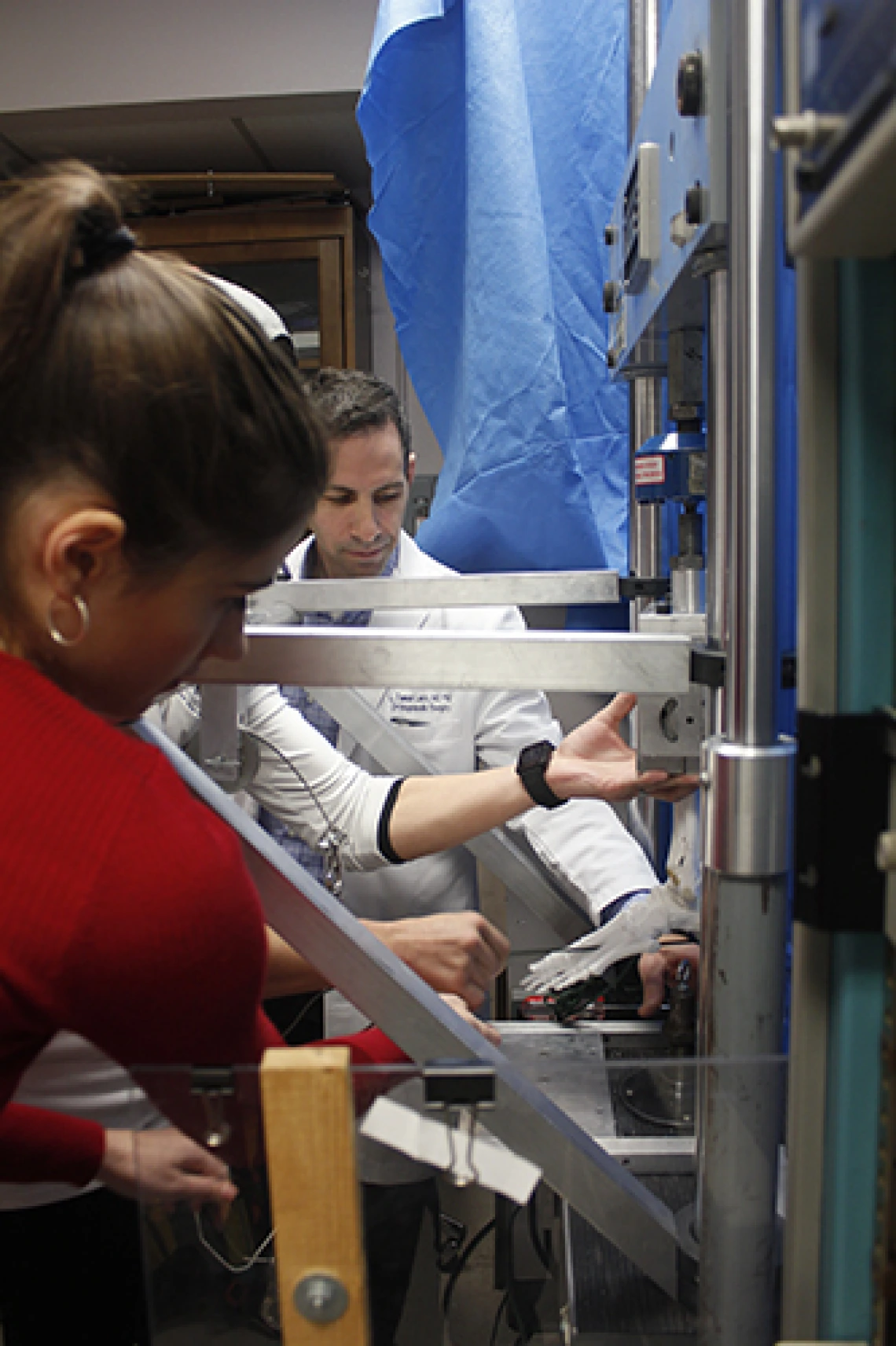A Robotic Device to Help People With Damaged Joints Walk

Dr. Daniel Latt and Olivia Talarico operate a robotic gait simulator.
Project Title: Robotic Gait Simulator
Team 18077 Members:
Miguel Angel Osorio, mechanical engineering
Michael Polenick, electrical and computer engineering
Olivia Talarico, biomedical engineering
Harrison Thurgood, mechanical engineering
Genevieve Wahlert, biomedical engineering
Sponsor: UA Department of Orthopaedic Surgery and UA Department of Biomedical Engineering
Robotic Foot Walks Implant Design Toward Real-World Application
Surgical implants can vastly improve patients’ quality of life, allowing people with damaged joints to walk, for example. But before surgeons perform the procedures to place these implants in humans, they need to understand how the implants will operate in the context of a walking, working limb.
“It’s not just taking a cadaver limb and applying body weight load to it,” said Dr. Daniel Latt, an associate professor of orthopaedic surgery and biomedical engineering. “All the other tendons in the foot impact the force on the foot, so it’s important to create a realistic model of it.”
That’s exactly what he’s asked Team 18077 to do, in a continuation of the project he sponsored during the 2017-2018 school year. This year’s team created a more realistic model by including more tendons – adding three to the original design’s four – and incorporating a treadmill into the setup to create a more natural sense of movement. The actuators, or the parts of the device responsible for movement, can move more quickly and handle a heavier load. The final version of their project will involve an actual cadaver foot.
This is Latt’s fifth year sponsoring an Engineering Design Program project, and he enjoys reaping the benefits of an interdisciplinary team.
“We want to involve biomedical engineering students in the lab,” he said. “And usually I choose projects that have various components – a mechanical component, an electrical component, a systems component. It makes people reach outside their inherent discipline.”
Measuring Sole Signals
The students agree that this multidisciplinary project has been an excellent learning experience. Most have a biomedical or mechanical engineering background, and the project has a large electrical engineering element.
“If you think about it from a biological standpoint, what controls your limbs?” said Michael Polenick, the team’s only electrical and computer engineering major. “Electrical and mechanical signals.”
The team is focused on creating a device that imitates walking as accurately as possible. By carefully documenting their work, they hope to leave next year’s team with enough information to simulate running, hopping or squatting.
At Engineering Design Day on April 29, they plan to show a video of a model foot “walking” on a treadmill and wearing shoes equipped with insoles that measure force. A screen will display the data, including a red spike each time the heel strikes the ground.
“I chose this project because, well, who doesn’t want to make a robotic foot?” Polenick said.

